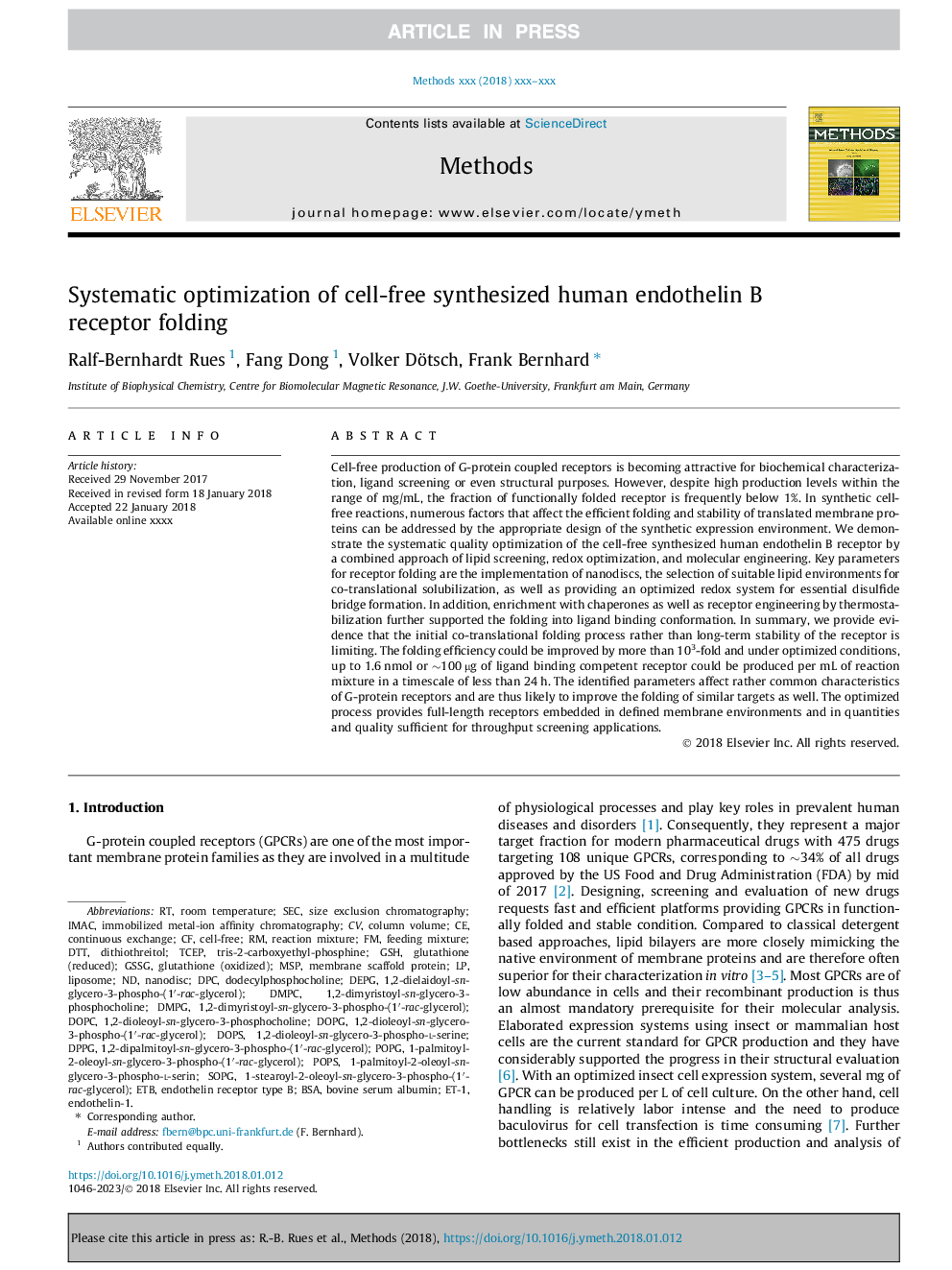| Article ID | Journal | Published Year | Pages | File Type |
|---|---|---|---|---|
| 10156932 | Methods | 2018 | 11 Pages |
Abstract
Cell-free production of G-protein coupled receptors is becoming attractive for biochemical characterization, ligand screening or even structural purposes. However, despite high production levels within the range of mg/mL, the fraction of functionally folded receptor is frequently below 1%. In synthetic cell-free reactions, numerous factors that affect the efficient folding and stability of translated membrane proteins can be addressed by the appropriate design of the synthetic expression environment. We demonstrate the systematic quality optimization of the cell-free synthesized human endothelin B receptor by a combined approach of lipid screening, redox optimization, and molecular engineering. Key parameters for receptor folding are the implementation of nanodiscs, the selection of suitable lipid environments for co-translational solubilization, as well as providing an optimized redox system for essential disulfide bridge formation. In addition, enrichment with chaperones as well as receptor engineering by thermostabilization further supported the folding into ligand binding conformation. In summary, we provide evidence that the initial co-translational folding process rather than long-term stability of the receptor is limiting. The folding efficiency could be improved by more than 103-fold and under optimized conditions, up to 1.6â¯nmol or â¼100â¯Âµg of ligand binding competent receptor could be produced per mL of reaction mixture in a timescale of less than 24â¯h. The identified parameters affect rather common characteristics of G-protein receptors and are thus likely to improve the folding of similar targets as well. The optimized process provides full-length receptors embedded in defined membrane environments and in quantities and quality sufficient for throughput screening applications.
Keywords
DOPC1,2-dioleoyl-sn-glycero-3-phospho-(1′-rac-glycerol)1,2-dipalmitoyl-sn-glycero-3-phospho-(1′-rac-glycerol)feeding mixture1,2-dioleoyl-sn-glycero-3-phospho-l-serinePOPGDPPGNanodisc1,2-dimyristoyl-sn-glycero-3-phospho-(1′-rac-glycerol)DMPGendothelin receptor type BDOPGETBDOPSDPCMSPET-1SECdMPCDTTGSHGSSGIMAC1-palmitoyl-2-oleoyl-sn-glycero-3-phospho-(1′-rac-glycerol)1,2-dimyristoyl-sn-glycero-3-phosphocholine1,2-dioleoyl-sn-glycero-3-phosphocholineBSAPOPsbovine serum albuminendothelin-1Cell-freeRoom temperatureDodecylphosphocholinedithiothreitolTCEPcolumn volumeLiposomereaction mixturemembrane scaffold proteinSize exclusion chromatographyImmobilized metal-ion affinity chromatographyglutathione (oxidized)Glutathione (reduced)
Related Topics
Life Sciences
Biochemistry, Genetics and Molecular Biology
Biochemistry
Authors
Ralf-Bernhardt Rues, Fang Dong, Volker Dötsch, Frank Bernhard,
